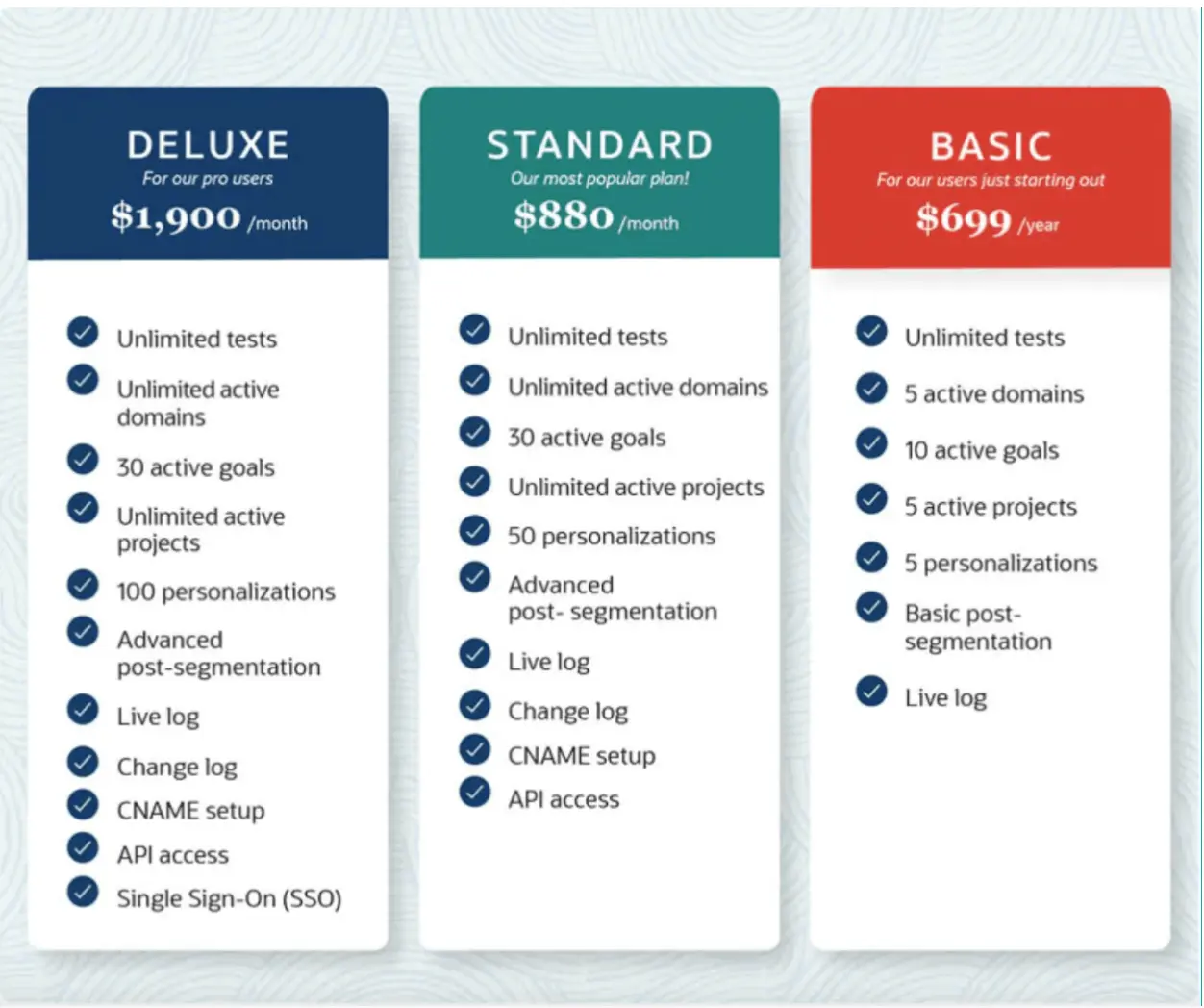In 2020, online shopping accounted for 17.8% of sales worldwide, with anticipation to reach 21% this year. There’s no doubt that eCommerce is experiencing phenomenal growth owing to the great convenience of digital shopping.
*Updated 8/12/2024
Besides convenience, quality of products, and customer service, pricing plays a significant role in consumers’ purchase decisions.
So big that 80% of online shoppers regard pricing as the most critical factor that drives purchase decisions. What kind of eCommerce pricing strategies are there?
As an eCommerce store manager or owner, you want to know this guide's six most crucial pricing strategies. So, let's get started!
1. Loss-Leader Pricing Strategy
The first pricing strategy aims at boosting the average order value (AOV) by bundling a discounted item with add-ons. Let’s understand the loss-leader eCommerce pricing tactic with a simple example.
Suppose you sell a printer at a discounted price of $100.
Customers will be tempted to buy the printer. But here’s the catch: you bundle it with an ink refill priced at $55.
Now, since the customer needs both the discounted product (the printer) and the add-on (the ink refill), they would likely move both items to the cart, thus increasing the AOV and sales.
eCommerce websites like Young Living Essential Oils and doTERRA sell diffusers at attractive discounts. But a diffuser can’t work without essential oils. So customers buy both diffusers and essential oils on these sites.
The primary product is sold at a loss but has been bundled with refills and add-ons.
Thus, the loss-leader pricing strategy is a great way to ensure long-term customer loyalty. You can further enhance this loyalty by generating an invoice and sending it to customers.
If you’re not currently using this powerful combination strategy, consider utilizing a price table for bundling and a free invoice form builder.
2. Psychological Pricing Strategy
Ever notice why some products are $29.99 instead of $30? What difference does one cent make? The answer lies in psychology.
Innovative eCommerce businesses use this pricing technique to lure customers. Research has shown that odd-number pricing results in higher conversion rates. It's also called charm pricing.
[Speaking of conversion rate, did you know it's easy to boost it using POWR plugins like popup, email countdown, form builder, eCommerce tools, and more?
In his book Priceless: The Myth of Fair Value (and How to Take Advantage of It), author William Poundstone writes that charm pricing boosts sales by an average of 24% compared to rounded numbers. It has been used since the 1880s, and almost all eCommerce brands use it.
One prominent example that comes to mind is Black Insomnia. They leverage charm pricing on their products, including coffee, brew gear, and mugs.
There are other techniques of charm pricing, including anchor pricing and installments.
The latter is self-explanatory, while anchor pricing is also something you witness regularly. The discounted price is right next to the slashed-out original price.
If you’re unsure which charm pricing strategy will be fruitful for your eCommerce store, try A/B testing to compare the revenue generated.
3. Price Skimming Strategy
Another popular eCommerce pricing strategy, skimming, refers to lowering the price of products over time. The keyword here is ‘time.’ As time passes, certain products become outdated, which decreases their value.
Big tech brands such as PlayStation, Apple, and Samsung use this technique. They launch new versions of their products every year with the latest features and updates.
Such brands have a loyal customer base that will purchase new consoles, phones, headphones, smartwatches, and other gadgets yearly.
This strategy is also used to introduce innovative technologies like AR Zone. Price skimming is an excellent strategy to attract cost-conscious customers.
Tech eCommerce brands can sell both products and products launched in previous years. They are loyal to the brand but wait for the price drop before making a purchase.
There is one potential downside, though. If your eCommerce brand doesn’t have a devoted following, price skimming might not be a viable choice for you.
However, it’s worth experimenting and seeing the results if you are an up-and-coming tech brand.
A word of caution: don’t decrease the price too much. Gauge the current market demand and the highest profit margin possible before lowering the product price.
4. Penetration Pricing Strategy
Penetration pricing is about entering the market with a lower product price than established competitors.
You gain market share in exchange for the lower profit margins that you expect to bear. It’s an excellent pricing strategy for eCommerce brands preparing for product launches in a new, highly competitive market.
The penetration pricing strategy is the opposite of price skimming, where you start with a high product price and high-profit margins (and reduce them over time). After which, you slowly increase the price.
As the customer base grows, your eCommerce brand achieves market dominance.
It’s effective for established and intermediate eCommerce brands entering fiercely competitive markets.
But as with most Sales strategies, you must be careful with penetration pricing. If you set the price of your product too low, customers might perceive it as a low-quality product.
Therefore, you must run A/B tests and check how pricing affects your sales channels, products, and conversions. Primark leverages this strategy to stay price-competitive.
But they make up for lower margins with high sales volumes. Netflix, too, is known to beat Blockbuster.
5. Value-Based Pricing Strategy
This pricing strategy involves identifying the maximum amount customers ready to pay for a product.
It’s because such customers value ‘fairness’ and quality over everything else. For this reason, this strategy is also known as consumer-based pricing.
If your eCommerce store sells rare, sustainable, fairly sourced, cruelty-free, or top-quality products, you’ll benefit significantly from value-based pricing.
Research has shown that 85% of consumers across the globe are willing to pay a greater price for eco-friendly alternatives, especially Gen Z and millennials.
Since customers know that brands like Tiffany & Co. sell premium jewelry and diamond rings, they readily pay top dollar. Similarly, consumers value cruelty-free, sustainable brands like Derma E, Pai Skincare, and Credo Beauty. So, they happily pay a high price for their products.
If customers already perceive your products as valuable, you can launch a new line at a higher cost.
That said, you can’t just rely on your brand name while doing so. Your products should fall within these categories to justify value-based pricing:
- Status goods
- Luxury items
- Collectibles
- Art
- Environment-friendly
- Cruelty-free, ethically sourced
Chanel failed to do so with their 2021 Advent Calendar, a bunch of cheap stickers, snow globes, pins, and miniature versions of makeup items.
The calendar was priced at $825, while the products inside it weren’t worth more than $250. Some customers compared their calendars with Sephora on social media.
Sephora's calendar, worth $102, was sold at $45. The Body Shop also sold its advent calendar for $79. Customers were disappointed, so Chanel had to apologize.
You don’t want to play with reputation regarding value-based pricing.
6. Dynamic Pricing Strategy
In dynamic pricing, product prices change as per consumer demand.
If the sales volume falls below a certain threshold, you can reduce the cost to bring it back up. And if the sales soar, you can increase the price to gain more profit.
Famous eCommerce giants like eBay and Amazon use dynamic pricing to increase profitability. They also consider specific time and competitor pricing as a part of their strategy. Hence, the technique is called time-based, demand, or surge-pricing.
If your products sell out fast during Christmas (a specific time of the year), you can generate more profits by increasing the price. And during other times, you can reduce it to keep up the sales.
Let’s take another example.
Suppose you have unsold stock in your inventory.
You can send out an e-newsletter to your customers, notifying them that you’re running a promotion. And under that promotion, you can sell the unsold stock at a discounted price.
If you sell an assortment of products on your eCommerce store, you can combine dynamic pricing with a loss leader. You’d slash the price of a primary item and jack up the cost of add-ons! Both strategies allow you to cross-sell and upsell your online store.
There is, of course, one downside to dynamic pricing. If customers know that your prices will eventually fall, many will be comfortable waiting for them before buying from your store.
Make sure there aren’t too many fluctuations in your costs too. Otherwise, you might lose your customers' trust.
-
How to Use Dynamic Pricing for Your Advantage and Don’t Let It Turn Your eCommerce Business Into Chaos?
You will need a solid sales tracking system to implement an educated and strategic dynamic pricing model for your business. You will also need to have a clear understanding of your product costs.
Once you have this information, you can begin to set prices that reflect both the value of your product and the willingness of your customers to pay.
Inventory management software can give you the insights you need to set prices that maximize your profits. The software can track your sales data and update you in real time.
With this information, you can decide how to price your products.
If you're selling on multiple eCommerce platforms and track everything manually, you’re likely not making the most of your time or profits.
On the other hand, inventory management software can help you save time and money by automating many of the tasks associated with selling online.
In short, install multichannel inventory management software to make dynamic pricing easier for you and more effective for your business.
That concludes our list of the six eCommerce pricing strategies you can use in 2022!
Since pricing plays a vital role in sales, it impacts the growth process. The content supports the pricing process, which actually grabs a serious audience.
A unique copywriting strategy will help you get a perfect sales volume in combination with pricing strategies. While writing the content, always check plagiarism and make it unique, as customers and search engines love it.
Try Shift4Shop to launch your eCommerce business today.
Final Note
Now that you know the most game-changing eCommerce pricing strategies, you can start testing them on your store.
Remember, the goal is to boost conversions, brand loyalty, and customer satisfaction. Any pricing strategy or combination of methods to achieve the three is the most suitable for your brand.
Author Bio
Mia has 4+ years experience in SEO and is currently looking out outreaching projects. She enjoys meeting new people and hearing new perspective. You can connect with her on LinkedIn.





